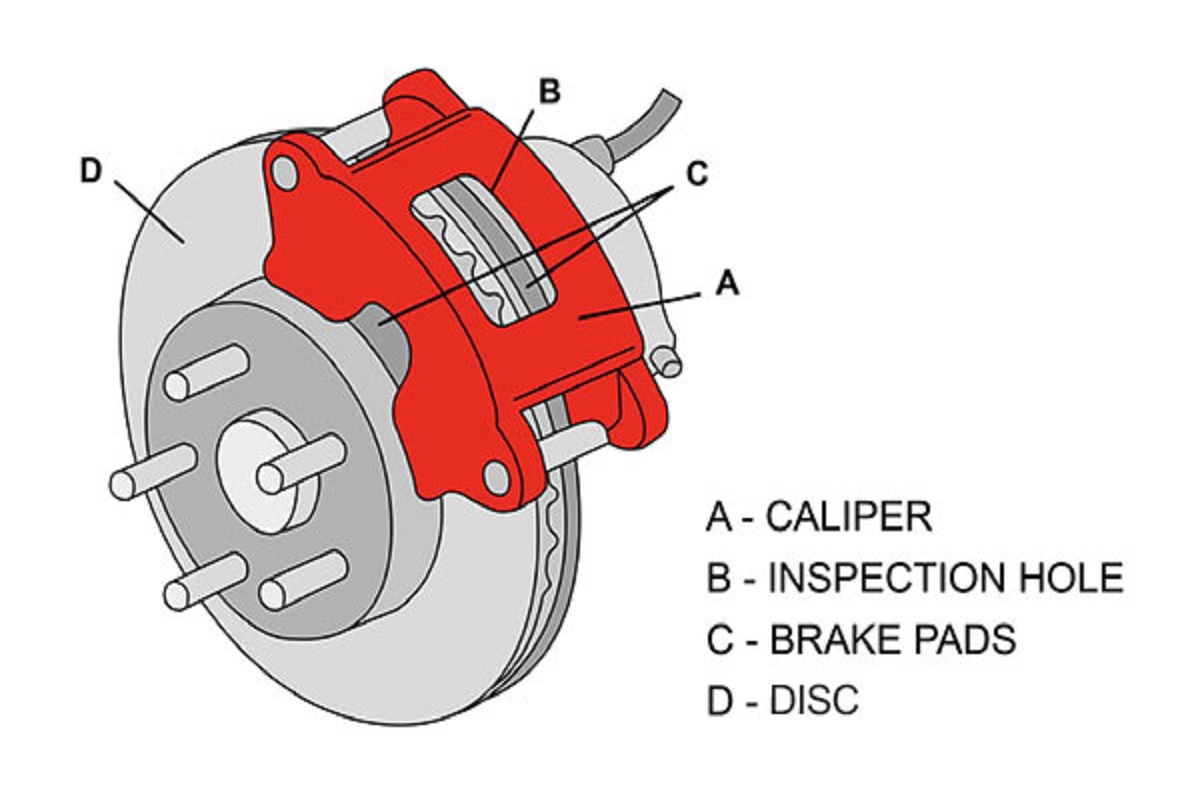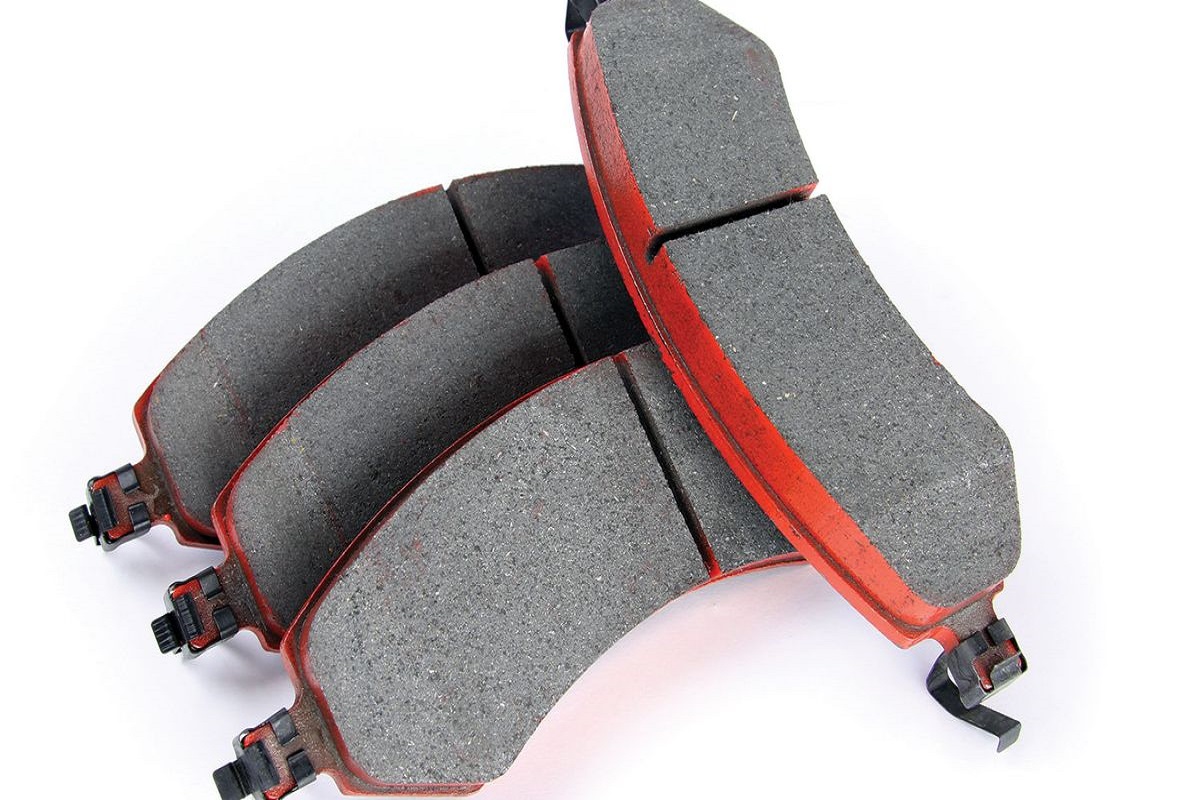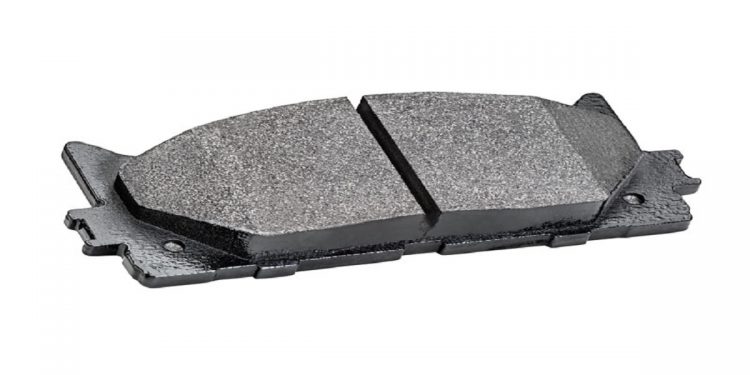Brake pads are an essential element of your vehicle’s braking system and they are key to your safety. They suffer high temperatures, countless heat cycles, and are constantly subjected to all kinds of corrosion, chemicals, and road grime. Every time you press on the brake pedal, a hydraulic clamp called a brake caliper squeezes a pair of brake pads against a spinning metal disc (the brake rotor) attached to each wheel. When the brakes engage, friction is created between the brake pads and the sides of the rotors, this friction produces energy in the form of heat, and that energy is used to slow and stop your car. The contact between the pads and the brake rotors is going to cause something to wear away. Brake pads contain a sacrificial friction material bonded to a metal backing plate so that they can give themselves up in the process so every time you use your brakes, a bit of that material wears away.

Several reasons can make your brake pad wear faster, these include aggressive braking, frequent sudden stops, driving on dirt roads and harsh conditions, and the composition of the friction material on your brake pads. Generally, brake pads are made from different materials, each having its unique characteristics, pros, and cons, the material includes; organic, ceramic, and metallic (or semi-metallic).
Click To Shop All Brake Pads Here
Organic Brake Pads
This is the most common type, and the least expensive, organic brake pads (sometimes called NAO – non-asbestos organic) are often the best choice for the widest range of cars and drivers. Although some vehicles come from the factory with other types of pads, when someone refers to OEM brake pads, they usually mean organic pads. Organic brake pads are made of materials such as glass, fiber, rubber, carbon, plants materials, and even Kevlar mixed with resins to bond them together. The pads tend to be quite soft and gentle on your brake system, they are also quiet in their operation, and they are very effective at low temperatures.
Pros of Organic Brake Pads
Apart from being the less expensive option between the three, organic brake pads are a good choice for daily driving (particularly in urban areas where you’re on and off the brakes all day long at lower speeds) because they are soft, quiet, and gentle on your brake system.
Cons of Organic Brake Pads
Because organic materials are softer, they also wear out faster and that is why they are not suited for performance or heavy-duty use. They also create more brake dust, and lose their effectiveness as brake temperatures increase resulting in brake fade and hence require more frequent replacement. And because they are softer, they require a bit more effort against the brake pedal.
Ceramic Brake Pads
If you are looking for performance pads, ceramic pads are highly recommended for that. They are widely used in today’s sports cars and supercars often paired with carbon brake discs. Even though they are expensive, ceramic pads are becoming more widely available to the everyday consumer both in factory applications, as well as for the aftermarket consumer.
Pros of Ceramic Brake Pads
Ceramic brake pads are generally easier on rotors and they create less dust. They almost are infinitely resistant to heat and fade, ceramic brake pads are also extremely durable and have a long service life. They are clean, comfortable, and gentle on the brake system. They’re also very quiet, easy on brake discs, and many ceramic pads are as effective at low temperatures as they are at high temps.
Cons of Ceramic Brake Pads
Ceramic brake pads are generally expensive compared to organic pads. Due to their high heat resistance, heat transfer can affect the performance of the rest of the braking system especially calipers and brake fluid. They are also not suited for heavy-duty use and they have a slightly poorer biting power when cold.

Metallic (or Semi-Metallic) Brake Pads
Manufacturers started integrating metals such as copper and steel wool, into their friction compounds when they reached the limit of braking performance organic materials could accomplish on their own. This is how metallic break pads were born and here are their pros and cons.
Pros of Metallic Brake Pads
Metallic brake pads offer greater resistance to high temperatures, they stave off wear and tear better due to repeated heat cycling. Because they are harder, they last longer than organic brake pads. Metallic brake pads have better fade resistance They offer solid stopping power for trucks, heavy-duty or performance use where high braking temperatures are common. If you’re into track days or regularly drive in stop and go traffic on the freeways where frequent heavy braking is the norm, metallic pads may also be for you. Because they have more metal, they dissipate heat so well compared to ceramic brake pads.
Cons of Metallic Brake Pads
Metallic brake pads are noisy at low temperatures and slow speeds. They are dirty and create more brake system wear. Their stopping power when the brakes are stone cold is far less than pure organic pad. They can also be hard on the rest of the components in the braking system, especially rotors and brake fluid because of the high level of heat transfer. Metallic brake pads are harder on rotors and give off dust that rusts.
In order to get the right pad for your car so that you can have a smooth braking performance and safety for your car or truck, you have to consider several factors; like did your vehicle come with ceramic pads? It is wise to stick with those. Do you prioritize silence and smooth application? Organic materials maybe your best choice. Are you frequently hard on your brakes, generating lots of heat in the braking system? Metallic pads may be your best choice.




